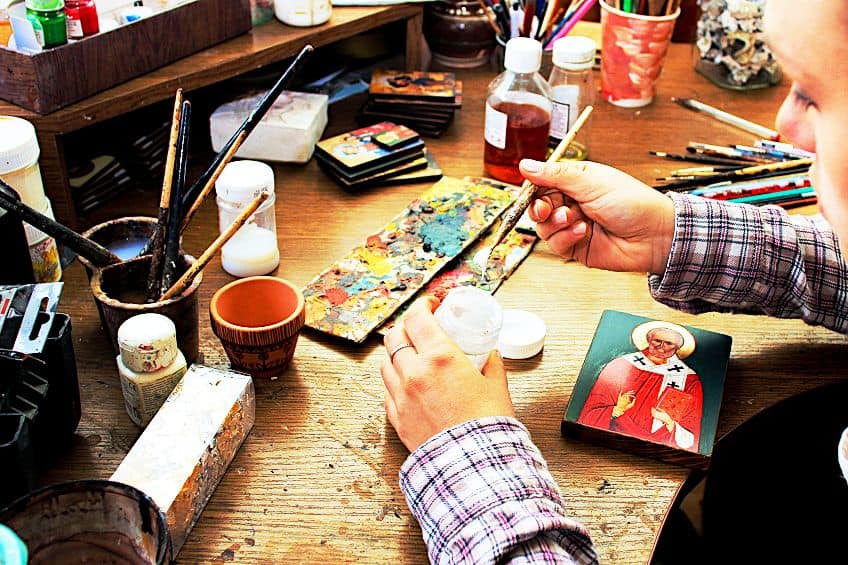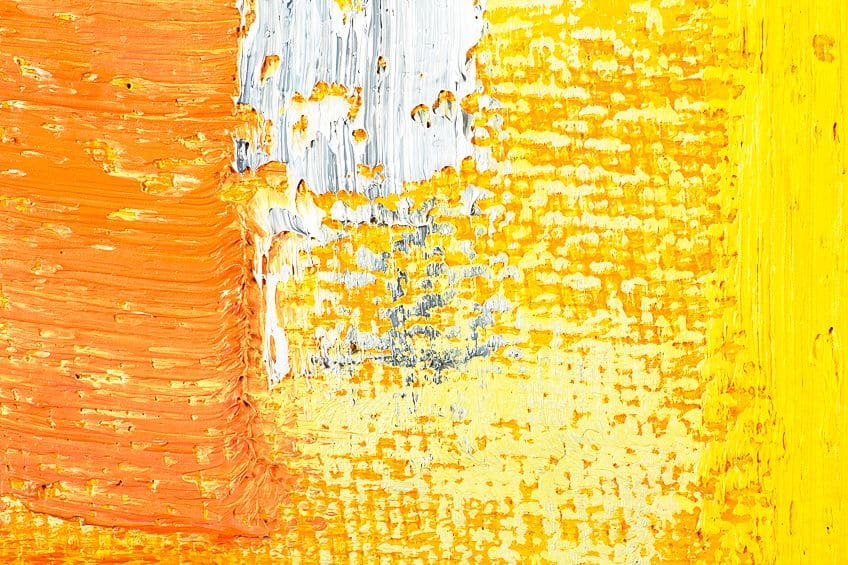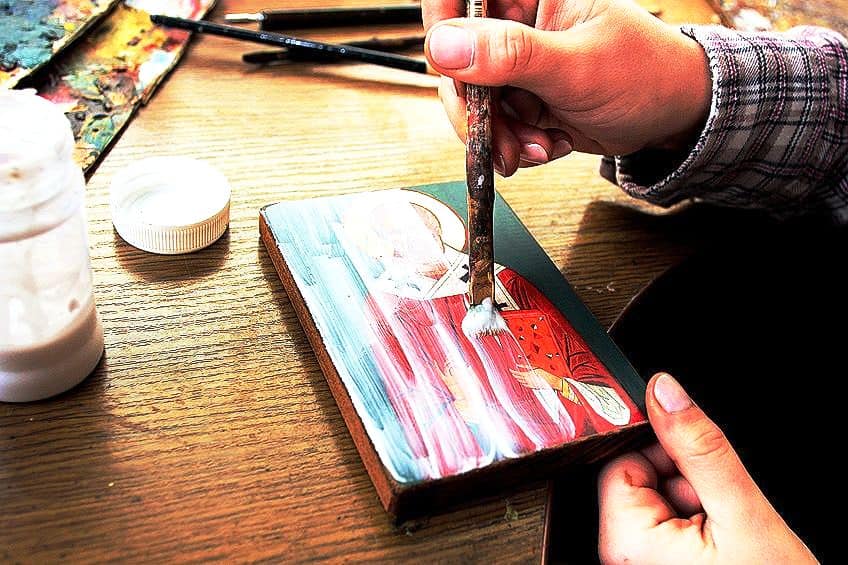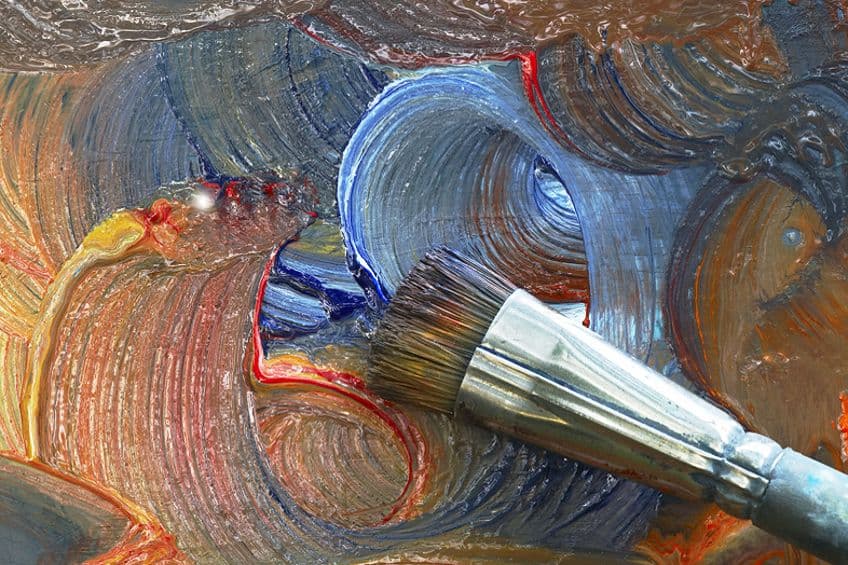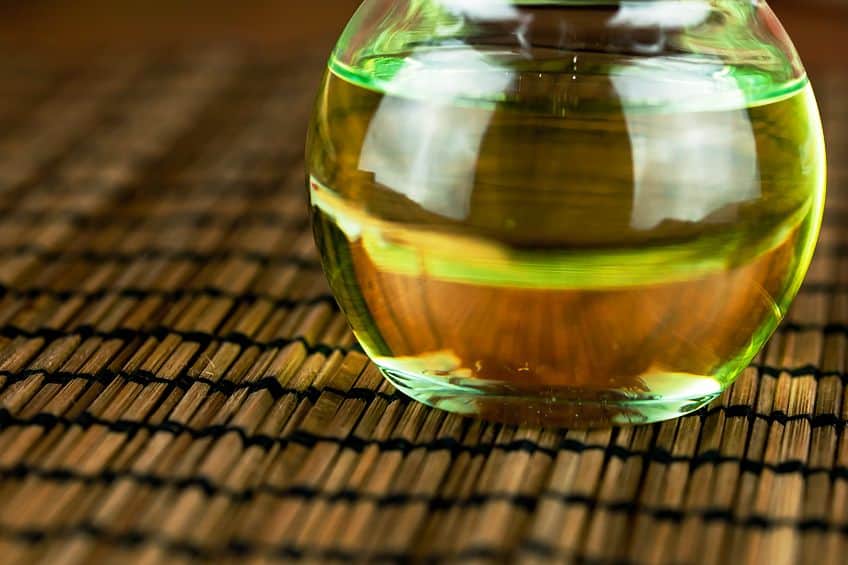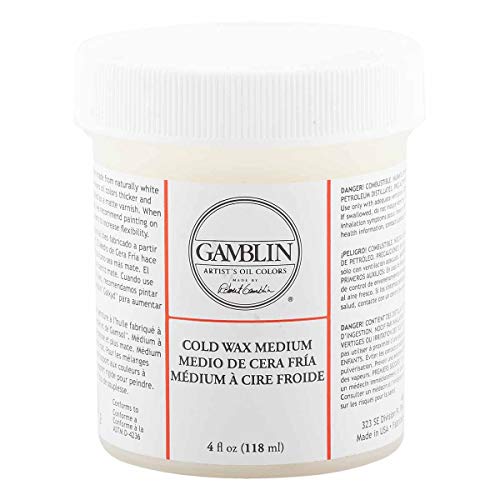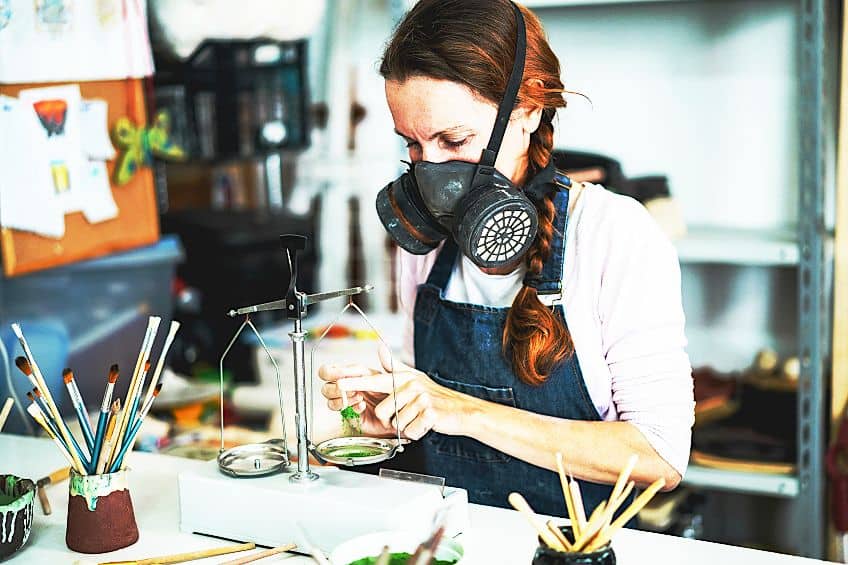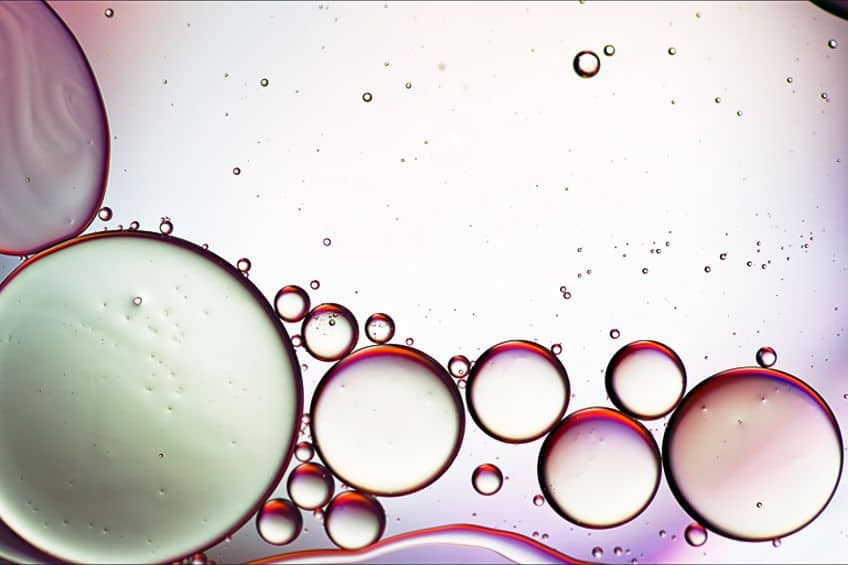Oil Painting Medium – Exploring Oil Painting Mediums
Compared to other painting types, oil painting provides a wonderfully rich and vibrant texture that can be enhanced with the use of oil painting mediums. There are a multitude of oil mediums available that can change the look, viscosity, and drying time of your paints. Understanding how to use oil paint mediums is important so as not to damage your piece and create the effect you want. Below, we explore what is a paint medium, the different varieties of oil paint mediums, as well as some easy oil painting mediums recipes.
Contents
- 1 An Introduction to Oil Paints
- 2 What Is a Painting Medium?
- 3 Different Types of Oil Painting Mediums
- 4 The Best Oil Painting Mediums
- 5 Recipes to Make Your Own Oil Painting Medium
- 6 Frequently Asked Questions
An Introduction to Oil Paints
While most commonly made from linseed oil, oil paints are also produced using linseed oil, poppy oil, safflower oil, or even walnut oil. The oil in oil paints acts as a binder that holds the pigments and hardens the paint as it oxidizes. Oil paints have a thicker, buttery consistency compared to acrylic paints, which is why the brush you use is very important when using oil paints. Many synthetic brushes have bristles that are too soft to hold thicker oil paints, so you may need an oil medium to thin the paint if you wish to use them.
Natural bristle brushes are coarser so can handle thicker oil paints without the need for a medium. These brushes are better to use if you are just starting out with oil paints and oil mediums.
What Is a Painting Medium?
A medium is a special additive that is added to your paint to change the look or performance of the paint in a particular way. There are three key reasons why artists use painting mediums:
- To change the flow and viscosity of the paint.
- To change the finish or surface of the paint.
- To change the drying time of the paint.
Oil painting mediums can be used to make oil paints thicker, for impasto painting, or more fluid, to create a wash. Mediums can also be used to alter the transparency of your paint or change the finish from gloss to matte. Some oil mediums can even reduce the drying rate of your oils, giving you more time to blend the colors, or increase the drying rate to make it dry faster in time to meet deadlines. Using too much medium, however, can leave you with a piece that is dull and washed-out.
Understanding how and when to use oil painting mediums can not only add variation to your mark-making, but also increase your ability to control your paint and help you learn new painting techniques.
How to Use an Oil Painting Medium
Each medium will change different characteristics of your paint and sometimes these characteristics will go hand in hand. Beware of using too much painting medium, as many will break down the structure and integrity of your paint, resulting in dull and flat colors. If you have used too much medium, it is better to allow the paint to dry completely and then paint over it using less diluted paints. Before you add an oil paint medium to your next piece it is important to remember some key characteristics of painting with oils.
Oil paints do not dry through evaporation like water-based paints, rather they react with the oxygen in the air.
This means that upper layers that are exposed to more oxygen dry faster than lower layers. If the upper layer dries before the lower layers, then your painting becomes more prone to cracking. Layers that contain more fat slowly expand as they oxidize, which will further crack any upper layers that dry faster. The fat-over-lean painting technique has been created to prevent this.
Fat over Lean
This is an oil painting technique that involves painting thicker layers and oilier over thinner, less oil ones. Artists use thin, lean layers earlier in their paintings to block in broad shapes and coloring. They then slowly add more detail in thicker layers on top of these early layers. It is important to remember this concept, as many oil painting mediums alter the thickness of oil paints or dilute their oil content. This means that you can only use them in certain layers or have to use wet-on-wet painting techniques to ensure that they do not crack.
Different Types of Oil Painting Mediums
Each painting medium has its own unique characteristics and affects your paint in various ways. Some are used in everyday painting, whilst others are only used in specific painting techniques.
| Oil Paint Medium | Effect On Oil Paint Consistency | Effect On Oil Paint Finish | Effect On Oil Paint Drying Time |
| Linseed Oil | Increases flow | Gloss | Increase |
| Stand Oil | Thickens | Gloss | Increase |
| Drying Linseed Oil | Increases flow | Gloss | Decrease |
| Poppy Seed Oil | Increases flow | Gloss | Decrease |
| Walnut Oil | Increases flow | Gloss | Decrease |
| Safflower Oil | Increases flow | Gloss | Increase |
| Spike Lavender Oil | Thins | Matte | Increase |
| Turpentine | Thins | Matte | Decreases |
| Mineral Spirit | Thins | Matte | Decreases |
| Glaze Medium | Thins | Gloss, matte, transparent | Decreases |
| Alkyd Medium | Thins | Gloss | Decreases |
| Siccative Medium | Thins | Matte | Decrease |
| Wax Medium | Thickens | Matte, satin | Increases |
| Gel Medium | Thickens | Gloss | Increases |
| Cobalt Drier | Unchanged | Gloss | Decreases |
| Dammar Varnish | Thins | Gloss, matte | Decreases |
Oil-Based Mediums
The oil that is used to create an oil paint can also be used as an oil medium. Oil mediums will extend the drying time of your paints, which can allow you more time to manipulate or blend the paint. As these mediums add more fat to your layers, they should be reserved for the middle to last layers of your painting.
Oil mediums also add more depth to your colors, keep the paint flexible as it dries, and help prevent over-thinning with solvents.
Linseed Oil Medium
Linseed oils are a medium that softens oil paints. This is especially useful if your paint has turned pasty in the tube or on the palette as you can simply add a few drops to bring the paint back to a buttery consistency. Be cautious not to use too much linseed oil medium as it may cause your paints to become too fatty, which will result in ripples in your painting as it dries. Linseed is also prone to yellowing as it dries, however, cold-pressed varieties do undergo less yellowing. Different linseed oils will have different effects on your oil paints.
Thicker oils, like linseed stand oil, will thicken your paints, and give them more body whereas thinner oils, like cold-pressed linseed oil, will give more flow to your paints and reduce visible brushstrokes.
Cold press oil is extracted without heat and produces a higher quality oil than refined oil. This makes it better for mixing your own pigments, however, it is very expensive. Refined oil is extracted using heat and alkali and is much cheaper than cold-pressed oil and remains a good quality oil. Refined oils, like alkali refined linseed oil, will act as a paint extender, and is therefore great for adding to your paint as an oil paint medium. Stand oil is just linseed oil that has been thickened using high heat until it reaches the consistency of honey.
It is more concentrated and thickens paint more than regular refined linseed oil, so you only need a small amount. Stand oil creates a tough film over your paints as they dry, is good for turning your oil paints into glazes, and it levels out your brush strokes to leave a glossy sheen. Drying Linseed Oil is another oil medium. It increases the gloss finish of your paints, and, unlike conventional linseed oil, it accelerates their drying rate.
Drying linseed oil improves the flow of your paints and can be mixed with other oils to speed their drying.
Poppy Seed Oil Medium
Poppy seed oil is a lightly straw-colored or clear-drying oil. Because of its light color, this oil is often used in the manufacturing of white or other light colors. While poppy seed oil does not yellow your paints, it can make them dry more brittle than the more popular linseed oil.
Walnut Oil Medium
Walnut oil is cold pressed from walnuts. This oil medium makes your paints dry more rapidly and is more durable than poppy seed, however, less durable than linseed oil. Walnut oil medium also dries down less yellow than linseed oil.
Safflower Oil Medium
Like poppy seed oil, safflower oil is great to use in light-colored and white paints due to its non-yellowing characteristics. Safflower oil is considered to produce very similar effects to linseed oil; however, it may result in a more brittle film on your paints.
Solvent-Based Mediums
Solvents are solutions that dissolve your paints, which thins them and dilutes their oil content. Solvents are not only used on the canvas but are also used to create washes, clean paint off of palettes and brushes, and fix mistakes. Adding small amounts of solvents to your oil paints is essential for many painting techniques such as underpainting and glazing.
Spike Lavender Oil
Spike lavender oil is distilled from Lavandula spica and is also called oil of spike medium. It has similar effects to turpentine but has a greater tendency to oxidize, which means you only need a small amount of this medium to thin your oil paint and increase its drying time. Oil of Spike is a low-toxic alternative to turpentine and has a pleasant scent, which makes it perfect to use throughout the painting process.
Turpentine
Turpentine is one of the most well-known solvents for oil painting and is a must in every studio. This solvent dilutes and evaporates off your oil paints, thereby thinning them and reducing their drying time. Paints mixed with turpentine can be used for painting base layers and color-blocking as they contain less oil and are thinner than paints straight out the tube. Turpentine is also used for cleaning paint off brushes and other painting tools.
Caution should be taken when using turpentine as the vapor is irritating to the eyes, skin, and lungs and is also flammable.
Mineral Spirit
Mineral spirit is a great odorless and less toxic substitute for turpentine. Like other solvents, mineral spirit can be added to oil paints to thin and dilute them for the initial block-in and underpainting layers. Mineral spirits cannot be used in conjunction with dammar like turpentine can, however, it can also be used for thinning your paint as well as general clean up.
Resin-Based Mediums
Resin based mediums can be tricky to use at first, but they allow you to thin your paints, dilute their oil content, and reduce their drying time. Unlike with solvents, resin mediums have the added advantage of doing this without sacrificing their gloss finish.
Glaze Medium
Glaze mediums can be used to change the finish of your oil paints to either more matte or glossier. This medium is also used to add transparency to your oil paints, which allows them to be used in the glazing painting technique. This technique involves painting a thin layer of paint that has been mixed with a glaze medium over a dry layer of paint to tone the dry layer or improve the richness of color.
Alkyd Medium
Alkyd mediums can be used to reduce the time it takes for your oil paints to dry by almost 50 percent. It does this while having a minimal effect on the colors of your paint and producing a tough but flexible film, with a glossy finish. If the drying time is too quick, you can add an oil such as linseed oil to slow it and allow you time to work and blend your colors. The most popular alkyd medium is Liquin by Winsor & Newton.
Alkyd mediums are best used early in painting such as in underpainting layers.
Siccative Medium
Siccative medium is an oil painting medium that is used to increase the drying rate of your paints. Added in small amounts, drop by drop, this medium speeds up the chemical drying process of your oil paints, however, too much will cause your paint to become brittle. Siccative medium gives your paint a more matte and white appearance as well as a thinner consistency.
Other Oil Paint Mediums
Wax medium is a soft paste that is used to thicken oil paints and give them a matte finish. It does not yellow as it dries and can actually reduce the chance of your paint shrinking or cracking. Because of this, wax is often used in impasto painting by mixing it in a ratio of 1:4 for brush painting and in equal parts for knife painting. Wax mediums are produced in a variety of densities, with very heavy consistencies producing dramatic and defined peaks, and softer consistencies producing subtle edges that can be easily manipulated.
Gel medium has a variety of effects on your oil paints.
It thickens your paint, so it retains your brushstrokes, making it perfect for impasto painting techniques. Gel medium usually dries transparent so does not alter the look of your paints, improves your paint’s adhesion, and is used for many wet-on-wet techniques. Cobalt drier is a purple fluid made by adding cobalt salts to linseed oil. When it is added to oil paints it will reduce their drying time by attracting more oxygen to the paint.
It is purple, so may discolor lighter paint colors and should not make up more than five percent of your paint mixture. Take care not to use it in thick layers of paint as it can cause them to wrinkle as they dry. Dammar varnish is made from a mixture of turpentine and dammar gum and is commonly used as an oil painting medium throughout the painting process.
Dammar can also be mixed with stand oil and other painting mediums to achieve different effects.
The Best Oil Painting Mediums
Now that you have an idea of the different varieties of oil painting mediums available and the ways in which they affect your paint, we have chosen three of the best mediums that can alter your paint in different ways. Each of these products can benefit your paintings in different ways and can be used for different techniques.
Winsor and Newton Refined Linseed Oil
Linseed oil is a must in every oil painter’s studio and the great quality and consistency of this oil makes it a great option. This linseed oil thins your oil paints while preserving its color and gives them a glossy finish. This product is available from sizes as small as 75 ml to 1-liter cans so there is a size that fits your budget and oil painting needs.
- Add to other oils to slow drying.
- Reduces oil color consistency.
- Increases gloss and transparency.
PROS
- Thins oil paint
- Does not dilute colors
- Glossy finish
- Available in many sizes
CONS
- The cap can be difficult to remove
- Yellows some light colors
Gamblin Cold Wax Oil Painting Medium
Waxes are the best medium for oil painting when working with impasto painting techniques and this wax offers a lot of versatility at a great price. This product can be used to easily thicken your paints and can be thinned with a mineral spirit to give you more control over the consistency of your paint. This wax decreases the drying time of your paint and leaves them with a more matte finish; however, an alkyd resin medium can be added to increase its shine.
- This product will thicken your oil or alkyd paint.
- Wax medium will build up translucent layers.
- Provides a matte finish to your work.
PROS
- Gives oils a buttery consistency
- Easy to control the thickness of your paint
- Decreases paint drying time
CONS
- Gives paints a matte finish
- Needs other painting mediums to thin
Winsor and Newton Liquin Original Medium
One of the most well-known and reliable alkyd painting mediums. Liquin is a great product for greatly reducing the drying time of your paints while preserving their color and shine. This product also improves the flow of your paint, reduces visible brushstrokes, and is resistant to yellowing. This product does have strong fumes and should be used in a well-ventilated room.
- Speeds drying, improves flow, and reduces brush stroke retention.
- General purpose semi-gloss medium.
- Incredibly reliable alkyd painting mediums.
PROS
- Greatly reduces paint drying time
- Glossy finish
- Improved paint flow
CONS
- Produces strong fumes
Recipes to Make Your Own Oil Painting Medium
By understanding how different oil painting mediums work, you can easily create your own. Mixing your own mediums allows you to tailor it to your specific piece and needs. Below, we have compiled some easy oil painting mediums recipes for you to try out.
Quick Drying Medium for Underpainting
This recipe is for creating a drying medium that also thins your oil paints. This is perfect for underpainting layers or toning your canvas. Simply mix 50 ml of linseed oil and 50 ml of mineral spirit together to create a thinning medium. Then add three to four drops of siccative to this mixture to increase the drying time of your paints.
General-Purpose Oil Painting Medium
Combining equal parts stand oil and turpentine makes for a great general-purpose painting medium. Adding more turpentine will make the medium more slow drying. If you prefer one that is slightly faster drying, then you can substitute these mediums with linseed oil and white spirits.
All-Purpose Glaze Medium
A glaze medium can be made by combining 30 ml of dammar varnish with 30 ml of stand oil and then adding 150 ml of turpentine or white spirit. You can then slowly add cobalt drier to this mixture until you reach your desired drying time, however, be sure that it does not exceed more than 20 ml or 10% of your final mixture.
Oil painting mediums are tools that you can use to change your paint in many ways. Whether you are trying to decrease the drying time, improve the flow, or enhance the gloss, there is an oil painting medium that will meet your needs. If you cannot find the perfect one, you can even make it yourself with a few simple ingredients, which will enable you to make striking and unique oil paintings.
Frequently Asked Questions
What Is a Paint Medium?
A painting medium is something that is added to paint with the purpose of changing one or more of that paint’s properties. Painting mediums can be mixed into paint to alter the drying time, finish, and consistency of the paint. Some painting mediums can also be used to add texture to paint.
What Is the Best Medium for Oil Painting?
The two best mediums for oil painting include a solvent and a drying oil. Solvents such as turpentine or mineral spirits are great for thinning your oil paints for fat-over-lean techniques, as well as for general cleaning of paint and brushes. Linseed oil is the most popular oil medium for oil paints and is used to alter the flow of your paints. There are many other mediums for oil painting that can alter your paint in different ways to suit your needs.
What Are Some Easy Oil Painting Mediums Recipes?
To easily create an all-purpose oil painting medium, combine refined linseed oil and turpentine in equal parts. This medium can be used to improve the flow and dry time of your oil paint. If you do not like using turpentine because of its strong fumes, then mineral spirits are a great alternative. You can add more or less turpentine depending on the desired thickness and consistency of your paint. Another easy oil painting medium recipe is for a quick-drying medium. Simply combine equal parts of linseed and mineral spirits together and add a small amount of cobalt drier or siccative to the mixture. Ensure that the cobalt drier or siccative makes up no more than 10% of the total medium.
Megan is a writer and researcher who holds a degree in Social Sciences, with a specialization in Psychology and Environmental Science, from the University of Cape Town. Her dedication to acquiring knowledge and making a positive impact has driven her current work in promoting conscious and sustainable growth in Southern Africa. Megan’s interests encompass exploring the physical and psychological impacts of color in our environment on our mood and well-being. She is also passionate about the role of art and creativity, which has been an integral part of society since the beginning of human history. Since 2022, Megan has been contributing blog posts on painting and color theory at artfilemagazine.
Learn more about Megan van Schoor and about us.
Cite this Article
Megan, van Schoor, “Oil Painting Medium – Exploring Oil Painting Mediums.” artfilemagazine – Your Online Art Source. September 29, 2023. URL: https://artfilemagazine.com/oil-painting-medium/
van Schoor, M. (2023, 29 September). Oil Painting Medium – Exploring Oil Painting Mediums. artfilemagazine – Your Online Art Source. https://artfilemagazine.com/oil-painting-medium/
van Schoor, Megan. “Oil Painting Medium – Exploring Oil Painting Mediums.” artfilemagazine – Your Online Art Source, September 29, 2023. https://artfilemagazine.com/oil-painting-medium/.




